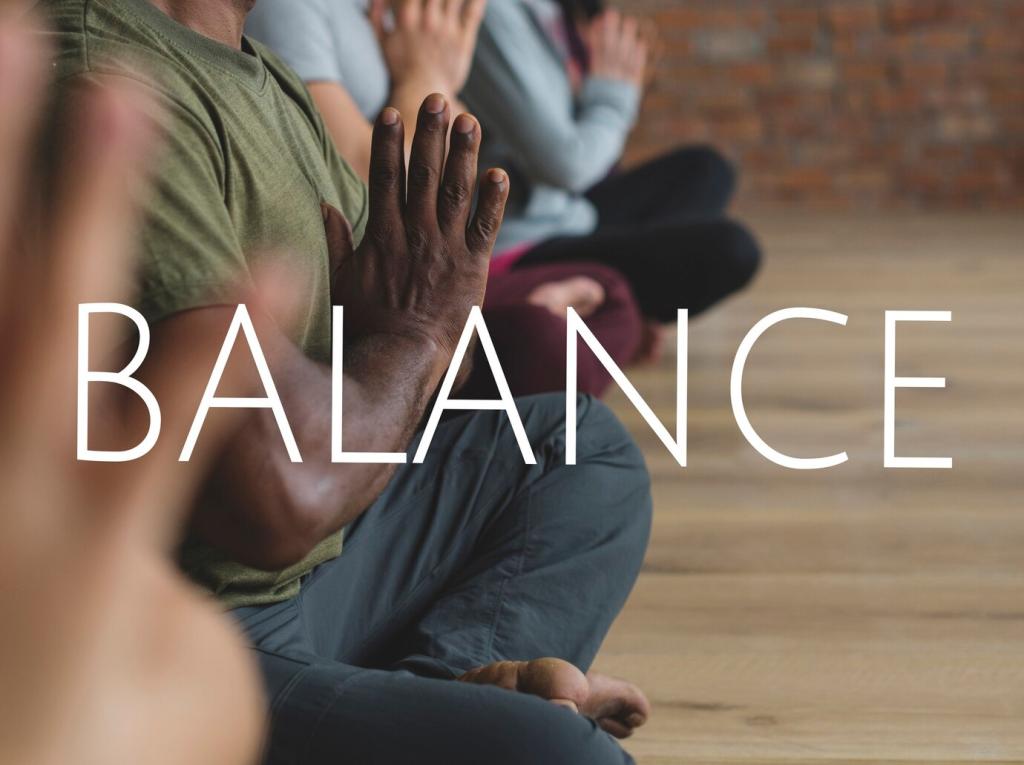In today’s fast-paced corporate world, remaining grounded and attentive can feel like a luxury rather than a necessity. However, cultivating mindfulness is a powerful way to manage stress, enhance productivity, and improve overall well-being. This page explores practical mindfulness techniques tailored for busy professionals, offering guidance on how to integrate these practices seamlessly into your demanding schedule. Regardless of how hectic your day becomes, these strategies can help restore focus, increase emotional resilience, and promote balance in both your personal and professional life.
Breathing Exercises for Immediate Calm
01
The Power of Diaphragmatic Breathing
Diaphragmatic, or belly breathing, is a foundational practice in mindfulness that allows you to tap into the body’s natural relaxation response. By consciously directing your breath deep into the diaphragm rather than shallowly into the chest, you signal to the nervous system that it’s safe to relax. This technique can be practiced discreetly at your desk, in a meeting, or even during a phone call, making it perfect for professionals who can only spare a minute or two. Regular practice can reduce anxiety and improve concentration, ensuring you stay focused and composed during challenging moments.
02
The 4-7-8 Breathing Method
The 4-7-8 technique, developed by Dr. Andrew Weil, is an effective way to interrupt stress cycles and clear mental clutter. To practice, inhale quietly through the nose for four seconds, hold the breath for seven seconds, and exhale through the mouth for eight seconds. This mindful breathing pattern helps regulate the autonomic nervous system, easing tension and inviting calm. For busy professionals, this exercise is a discreet and efficient tool to regain balance, especially before important presentations, meetings, or when transitioning between demanding tasks.
03
Box Breathing for Mental Reset
Box breathing, also known as square breathing, involves a four-part cycle: inhale for four counts, hold for four, exhale for four, and pause for four. This method is favored by high-performance professionals and athletes for its ability to swiftly quiet the mind and enhance focus. Practicing box breathing mid-workday can help disrupt negative thought patterns, promote greater emotional control, and improve overall mental clarity. Over time, integrating box breathing into daily routines can bolster your capacity to remain centered, even amidst the busiest schedules.
Intentional pauses are brief, conscious breaks taken as you switch from one task to another. Instead of plunging headlong into your next obligation, take a few seconds to close your eyes, notice your breath, and reset. These pauses can be as simple as stretching, standing up, or silently repeating a calming mantra. They act as a buffer against overthinking and fatigue, offering a moment of renewal. Over time, this simple practice can cultivate greater attention to detail and a more mindful work rhythm.
Mindful Transitions Between Tasks

Deep Listening
Deep listening involves giving someone your complete attention, setting aside distractions, and truly hearing their words and underlying emotions. For busy professionals accustomed to multitasking, this can be a challenge. By consciously focusing on the speaker, observing their tone and body language, and withholding judgment or immediate response, you foster stronger relationships and more productive dialogue. Deep listening not only improves outcomes but also demonstrates respect and empathy toward others.

Pause Before Responding
Taking a deliberate pause before replying in conversation allows you to collect your thoughts and respond thoughtfully rather than impulsively. This moment of mindfulness encourages you to process what the other person has said and reflect on your own response. Pausing helps prevent misunderstandings, reduces reactive tendencies, and ensures your communication remains aligned with your values. In high-pressure work environments, developing this habit can be an invaluable tool for maintaining professionalism and emotional intelligence.
Integrating Mindfulness into Daily Routines
Mindful Commuting
Whether you travel by car, train, or on foot, commuting offers a unique opportunity for mindfulness. Rather than allowing stress or distractions to dominate this time, focus on sensory experiences—notice the rhythm of your footsteps, the feel of the steering wheel, or the ambient sounds. Breathing deeply and mindfully during your commute can set a positive tone for your entire day or create a gentle boundary between work and home life. This conscious approach transforms an automatic activity into a grounding ritual.

Mindfulness for Stress Management
A body scan is a guided mindfulness practice that involves systematically bringing awareness to different areas of the body. By noticing sensations without trying to change them, you develop the ability to identify and release tension. This technique is especially helpful during stressful moments when physical symptoms, such as headaches or tight shoulders, arise. Regular body scans increase bodily awareness, allow for early intervention, and cultivate a deeper sense of calm throughout your workday.

Mindful Leadership Practices
Leading by Example
Mindful leaders set the tone for their teams by embodying presence, calm, and authenticity. Whether you’re holding a meeting, giving feedback, or managing a conflict, demonstrating mindful behaviors—such as deep listening and thoughtful response—encourages those around you to emulate these qualities. Teams led by mindful leaders often experience improved morale, increased trust, and greater innovation, as individuals feel seen, respected, and empowered to share their ideas.
Decision-Making with Clarity
Mindfulness enhances decision-making by fostering greater self-awareness and reducing impulsiveness. Before making important choices, mindful leaders take time to pause, breathe, and consider multiple perspectives. By mapping emotional responses without letting them dictate outcomes, these professionals cultivate a more objective and compassionate approach. Mindful decision-making leads to outcomes that align with both organizational goals and personal values, ultimately benefiting the whole team.
Supporting Team Well-Being
Mindful leaders recognize the importance of employee wellness and actively promote a supportive work environment. This can involve encouraging regular breaks, providing access to mindfulness resources, or fostering open conversations about stress and workload. By prioritizing well-being, leaders not only reduce burnout but also enhance productivity and satisfaction across the organization. Mindful leadership transforms workplaces into communities where individuals can thrive personally and professionally.
Cultivating Emotional Intelligence
Mindful practices such as meditation, journaling, or moment-to-moment observation help you become more attuned to your internal states. By noticing thoughts, emotions, and bodily sensations without judgment, you develop a fuller understanding of what drives your behavior. This heightened self-awareness is the foundation of emotional intelligence, empowering you to recognize triggers and respond adaptively rather than reactively in high-pressure situations.

